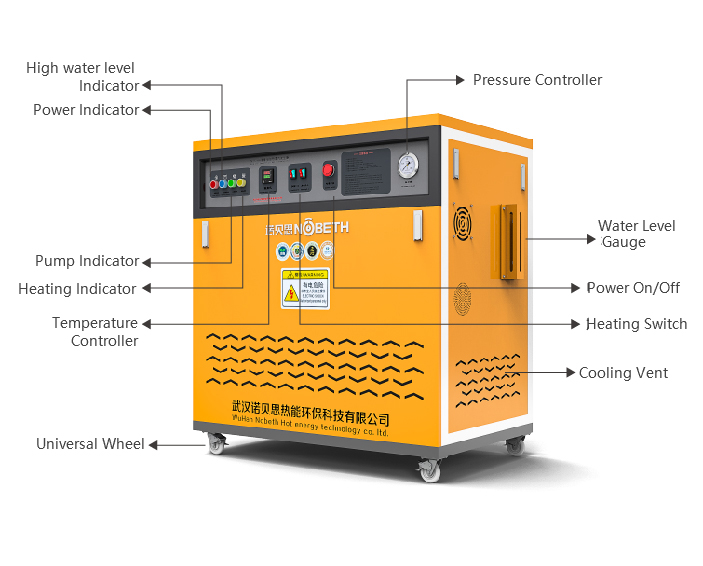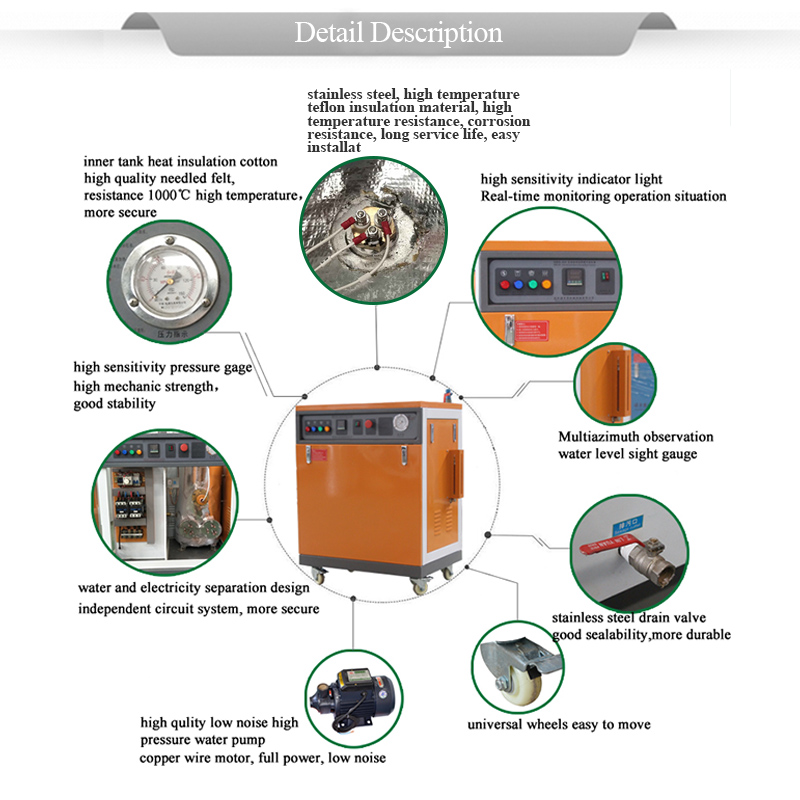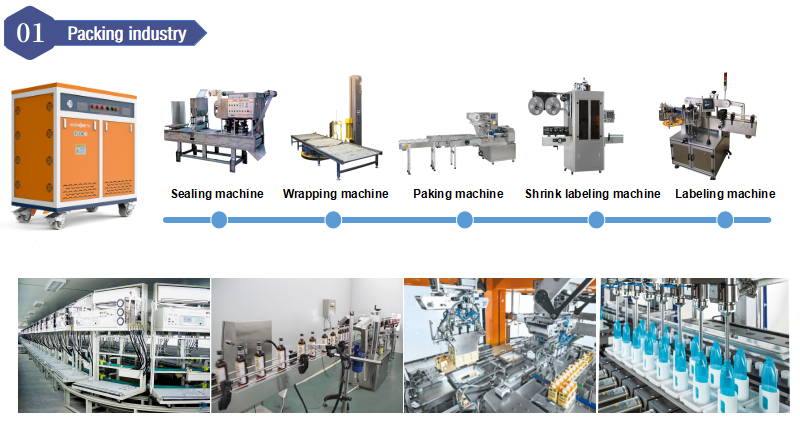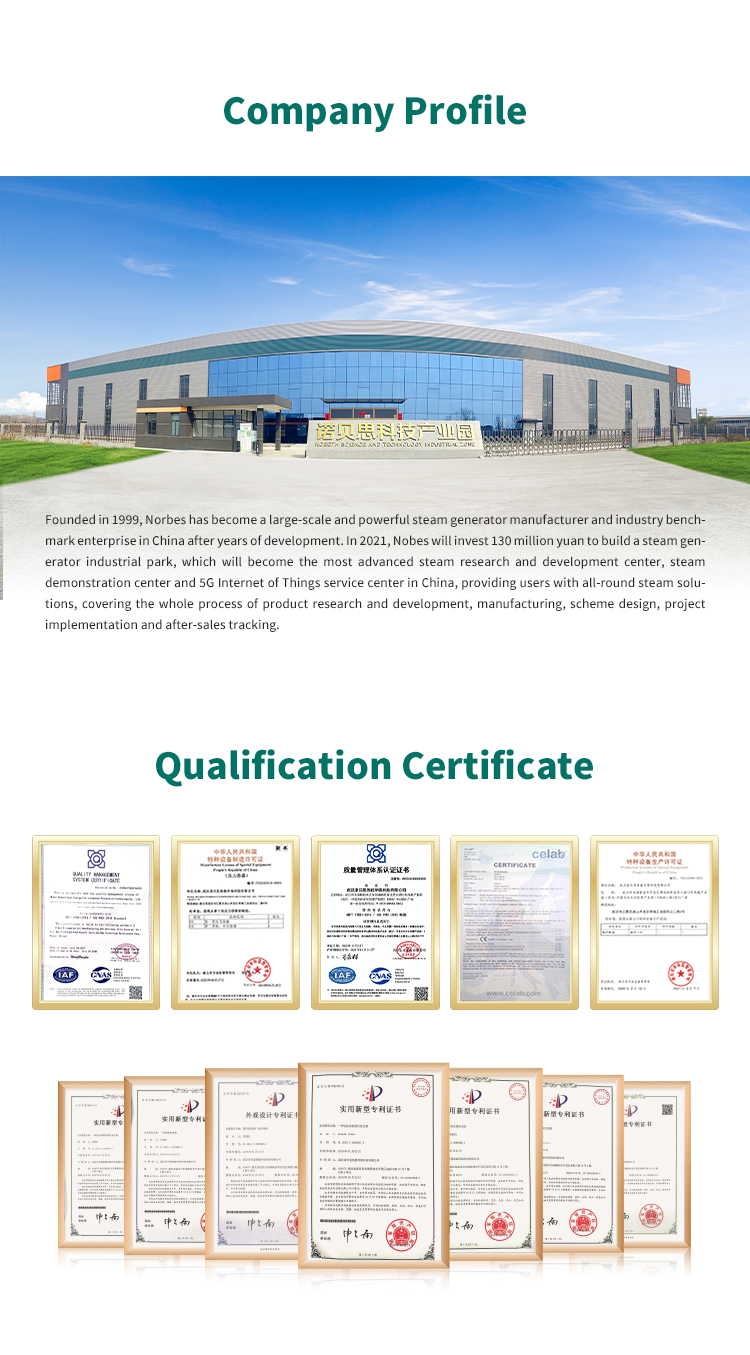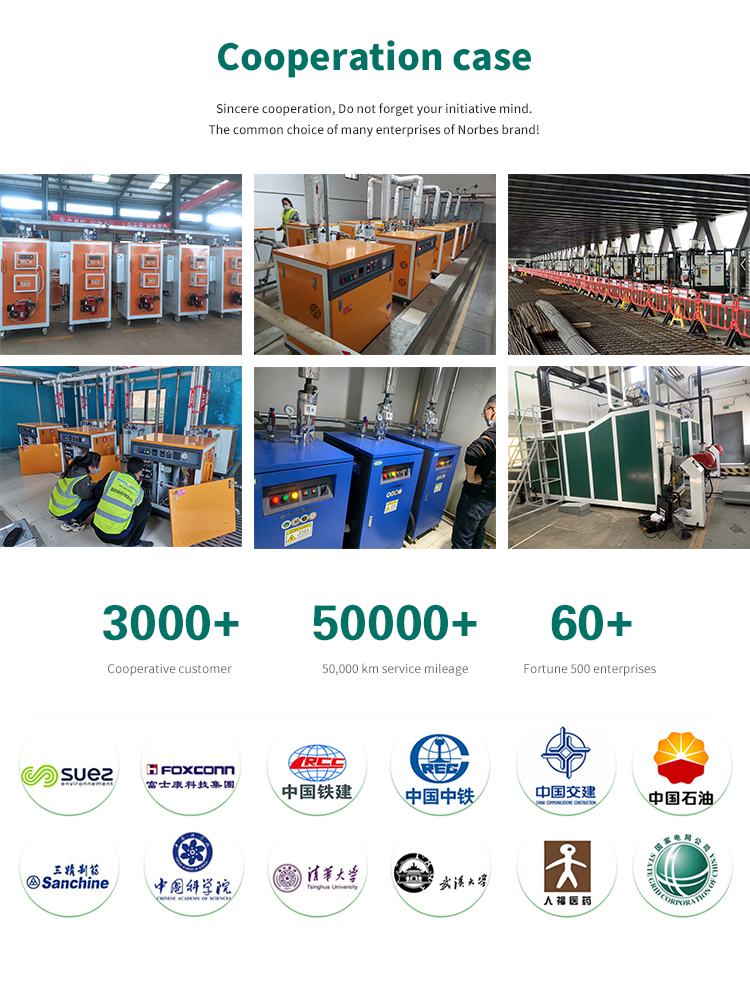
54kw Electric Steam Generator
The first is to feed water, that is, to introduce water into the boiler. Generally, it is equipped with a special pump to make the water diversion process more convenient and faster. When the water is introduced into the boiler, because it absorbs the heat released by the combustion of the fuel, steam with a certain pressure, temperature and purity appears. Usually, adding water to the boiler must go through three heating steps, namely: the water supply is heated to become saturated water; the saturated water is heated and evaporated to become saturated steam; link.
Generally speaking, the water supply in the drum boiler must first be heated in the economizer to a certain temperature, and then sent to the drum to mix with the boiler water, and then enter the circulation circuit through the downcomer, and the water is heated in the riser The steam-water mixture is produced when it reaches the saturation temperature and part of it is evaporated; then, depending on the density difference between the medium in the riser and the downcomer or the forced circulation pump, the steam-water mixture rises into the drum.
The drum is a cylindrical pressure vessel that receives water from the coal burner, supplies water to the circulation loop and delivers saturated steam to the superheater, so it is also a link between the three processes of water heating, evaporation and superheating. After the steam-water mixture is separated in the drum, the water enters the circulation loop through the downcomer, while the saturated steam enters the superheating system and is heated into steam with a certain degree of superheat.
Products categories
-

E-mail
-

Phone
-

WhatsApp
-

Top


